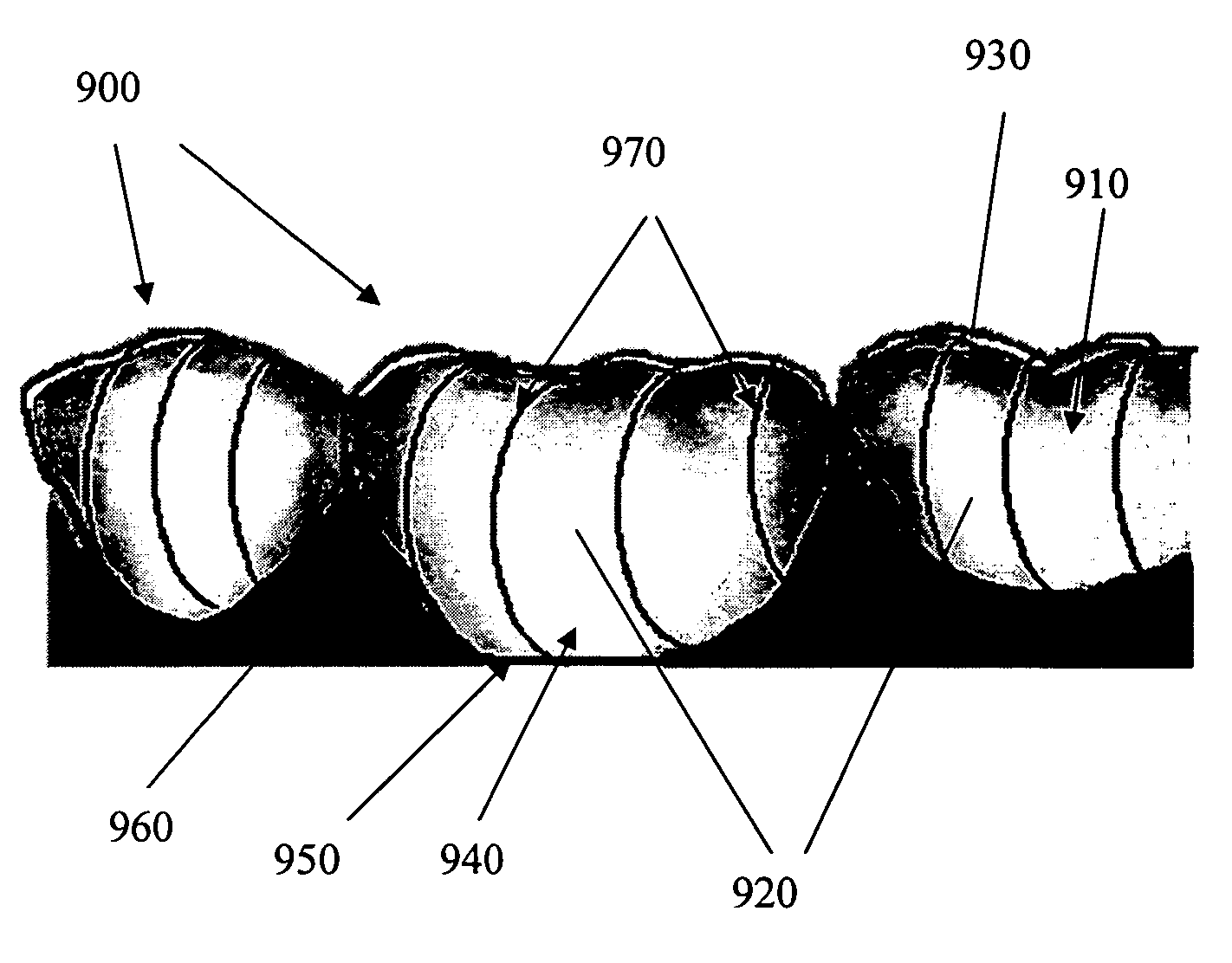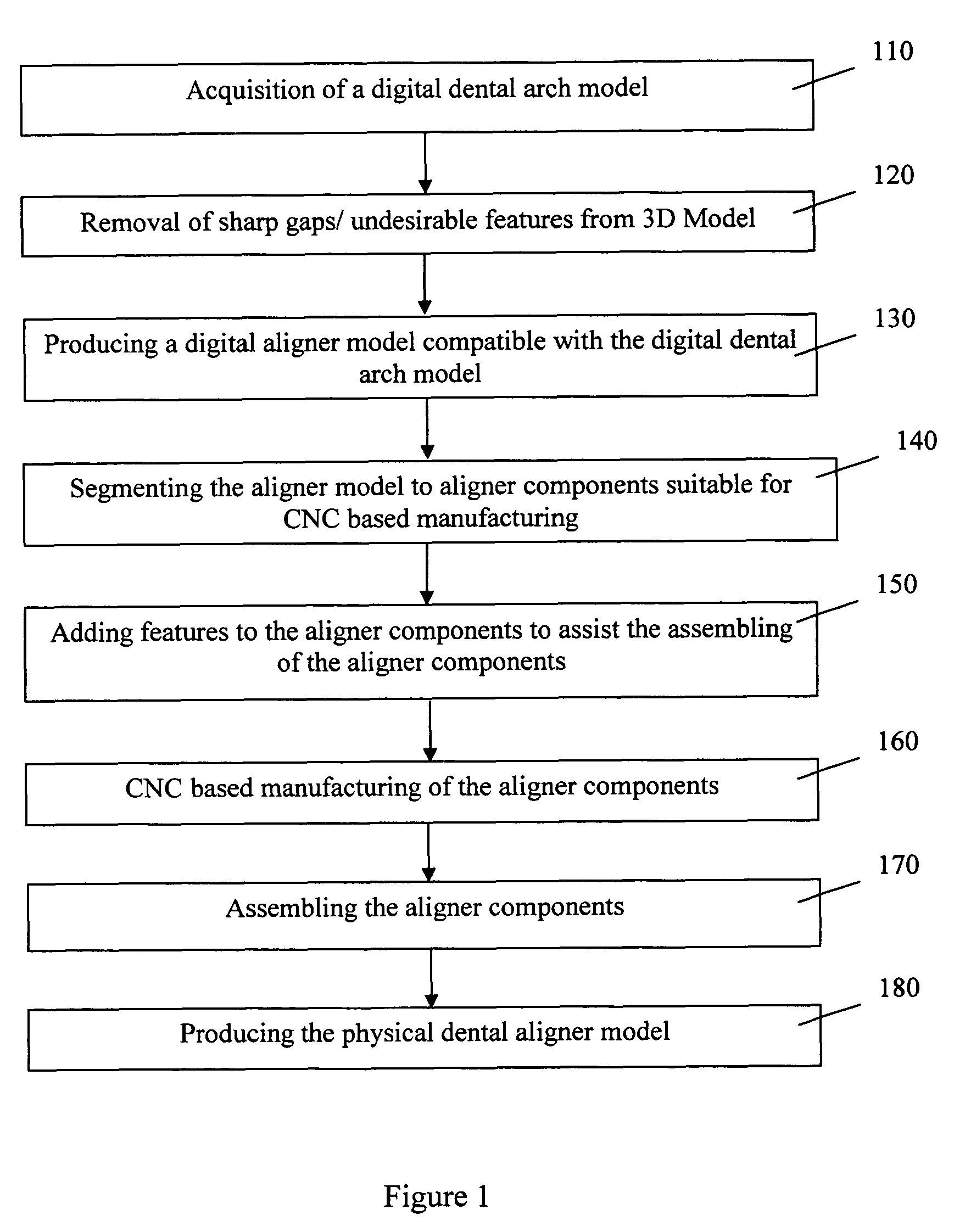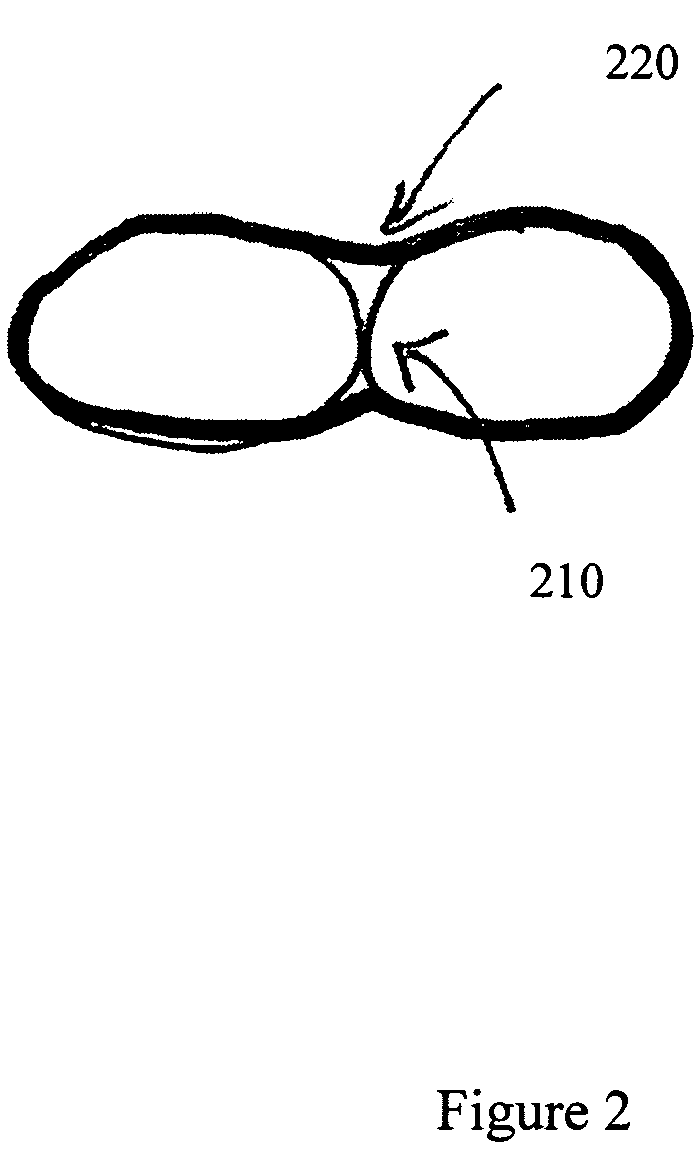Producing wrinkled dental aligner for dental treatment
a wrinkled, aligner technology, applied in the field of dentistry, can solve the problems of manual application of such bends, human error in accurately developing visual three-dimensional images of orthodontic structures, and inability to accurately estimate three-dimensional wire bends, etc., to achieve cost-effective and optimized results. effect of wrinkled aligners
- Summary
- Abstract
- Description
- Claims
- Application Information
AI Technical Summary
Benefits of technology
Problems solved by technology
Method used
Image
Examples
Embodiment Construction
[0048]FIG. 1 illustrates the process of producing a dental aligner in accordance with the present invention. In the present application, the term “dental aligner” refers to a dental device for correcting malocclusion. First, a three dimensional (3D) digital dental arch model is acquired from a patient's arch in step 110. The digital dental arch model can be obtained by 3D scanning of a cast produced from the patient's arch. The digital model includes a mesh of points in three dimensions that define the surfaces of an entire or a large portion of an upper or lower arch. Details of obtaining a digital model of an arch are disclosed in above referenced U.S. patent application titled “Producing a base for a physical dental arch model” by Huafeng Wen, filed Dec. 14, 2004, the content of which is incorporated herein by reference.
[0049]Next, in step 120, the digital dental arch model is smoothened by computer processing using a computer software. One or more criteria for the degree of smoo...
PUM
 Login to View More
Login to View More Abstract
Description
Claims
Application Information
 Login to View More
Login to View More - R&D
- Intellectual Property
- Life Sciences
- Materials
- Tech Scout
- Unparalleled Data Quality
- Higher Quality Content
- 60% Fewer Hallucinations
Browse by: Latest US Patents, China's latest patents, Technical Efficacy Thesaurus, Application Domain, Technology Topic, Popular Technical Reports.
© 2025 PatSnap. All rights reserved.Legal|Privacy policy|Modern Slavery Act Transparency Statement|Sitemap|About US| Contact US: help@patsnap.com



